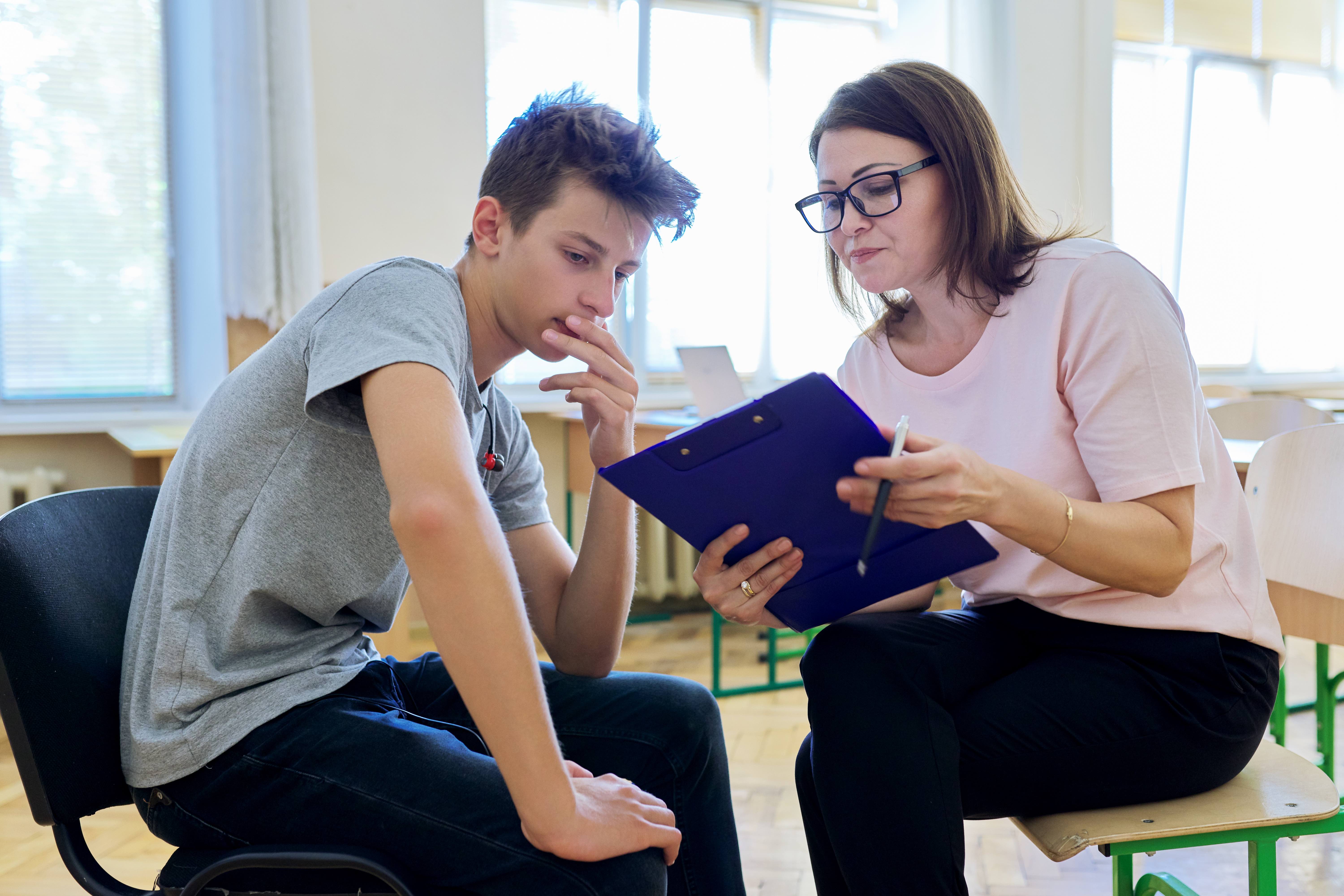
Health & Medicine
What actually works for anxiety and depression?

While there is guidance for health professionals to identify anxiety in adults, our new Australian-first guidelines are designed to help treat and manage anxiety in our young people
Published 26 October 2023
Riley* is a 15-year-old boy from Melbourne’s outer western suburbs. He lives with his mother, father and two younger brothers. Riley struggles with feelings of worry at school, and usually sits at the back of the class.
While he feels more relaxed on weekends with his friends, Riley often still avoids social interactions and finds himself freezing when asked questions at school. He feels isolated and trapped in a cycle of avoidance and fear.

Riley’s parents and teachers have tried getting him help but found that their local mental health services were overstretched and could not provide immediate relief.
So, to help with his transition to year nine, Riley’s mother has left her job to home-school her son.
Riley’s story is not unique and occurs across Melbourne and in cities all over the world. In an expensive and fragmented post-COVID world, what can health professionals do to help?

Health & Medicine
What actually works for anxiety and depression?
Anxiety is one of the most common mental health conditions in children, with a 2022 Royal Children’s Hospital Child Health Poll indicating that 50 per cent of children (aged from three to 12) experience anxiety in some form.
While feelings of worry, concern or anger are normal in children, more frequent symptoms like in Riley’s case – which follow a consistent pattern or hinder everyday life – could indicate an anxiety disorder.
In Australia, we know that seven per cent of children and young people have a diagnosable anxiety disorder at any given time. In the US, this number rises to 9.4 per cent.

We also know that if anxiety disorders are detected early, the risk of long-term challenges into adulthood can be reduced and managed more effectively.
Around 52 per cent of anxiety disorders globally are diagnosed before the age of 18, with symptoms becoming clear at 5.5 years old, on average.
However, many children remain undiagnosed and untreated. For those that do seek care, access can be difficult, with significant variability and inequity in the care they receive.

Health & Medicine
Knowing when to seek help for mental health
The Melbourne Children’s Campus, which includes Murdoch Children’s Research Institute (MCRI), The Royal Children’s Hospital (RCH) and University of Melbourne Department of Paediatrics, has released evidence-based clinical practice guidelines as part of our Mental Health Strategy – offering healthcare professionals a standardised, clear framework.
These Australian-first guidelines are designed to help health professionals diagnose, treat and manage anxiety in young people.
Our recommendations are based on the best available evidence and clinical research and work to improve consistency and quality of mental health care for young people.

We want to promote innovative treatment approaches and foster a greater sense of confidence and trust with young patients.
Ultimately, this over-arching guide can help infants, children and young people to get positive outcomes and minimise the potential for harm.
While there are already evidence-based guidelines for adults with anxiety, there are none specifically for children and adolescents.

Health & Medicine
Do we think about anxiety and depression differently now?
Young people may express anxiety differently to adults and will respond differently to treatments – meaning we need more specific care for this group.
Because many kids in this age group also struggle with emotional and physical changes, it can be difficult to discern when there is a more serious problem. This can result in misinterpretation and missed diagnoses.
The Melbourne Children’s Campus Mental Health Strategy’s guidelines were developed using reliable methods, supported by the National Health and Medical Research Council (NHMRC).
Our framework integrates available evidence, clinical expertise and lived experiences. We hope that healthcare providers globally can learn from our universally applicable findings and recommendations.

Our recommendations follow a ‘clinical journey’ for anxiety, taking in identification and assessment, treatment choices and planning care, psychoeducation, psychological and medication therapies, as well as progress monitoring.
We also emphasise the importance of individualised, holistic care and encourage healthcare professionals to consider the impact of anxiety on a child’s overall well-being and quality of life.

Education
Are the kids OK?
By incorporating these findings, we hope that healthcare providers can improve their consistency when approaching or treating young people with anxiety disorders.
All children, regardless of where they seek help, should have access to high-quality, comprehensive care for their anxiety.
By standardising this approach, we are closer to achieving this goal.
The development of an evidence-base clinical guideline is only the first step.
To be effective in the long-term, we need enthusiastic uptake around Australia and the world. In the meantime, Melbourne Children’s Campus will develop more resources so our written guide can be more easily translated into clinical practice.

Riley’s story also continues, with his mum able to secure an appointment with a psychologist in their local area. She diagnosed Riley with severe social and generalised anxiety disorder with a history of panic attacks.
A year into treatment, and Riley is addressing his avoidance and resistance through cognitive behavioural therapy. He has made more friends and is ready to go back to school.
For young people like Riley, anxiety will always be a part of their life.
However, consistent and reliable care frameworks can make a significant difference to the quality of life among children and adolescents with anxiety.
All health care professionals can play a role in making our young people’s future as bright as possible.
If you or anyone you know needs help or support, please contact Kids Helpline on 1800 55 1800 or Lifeline on 13 11 14.
*names have been changed.
Banner: Getty Images